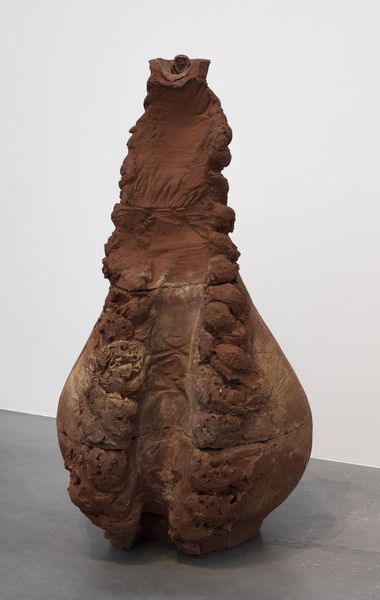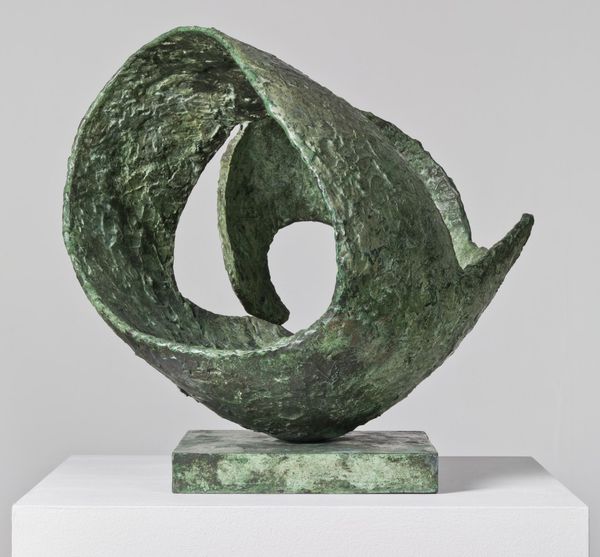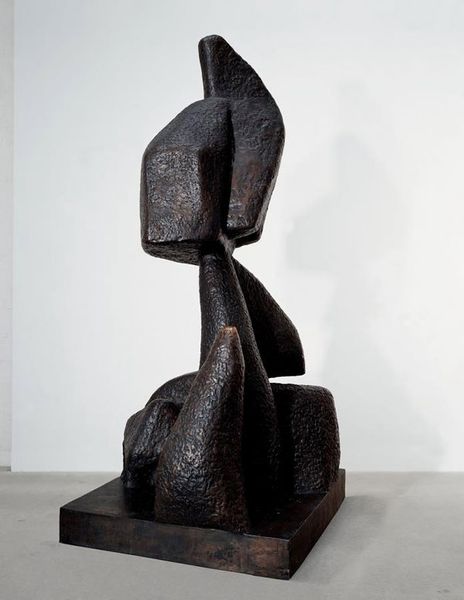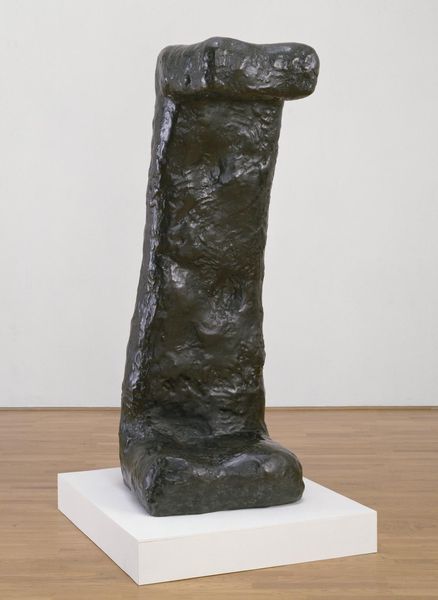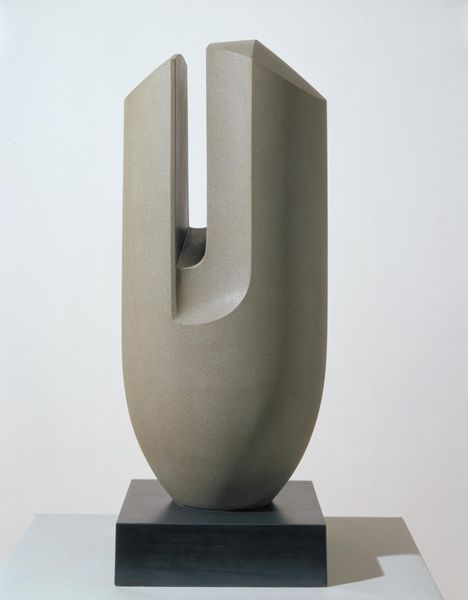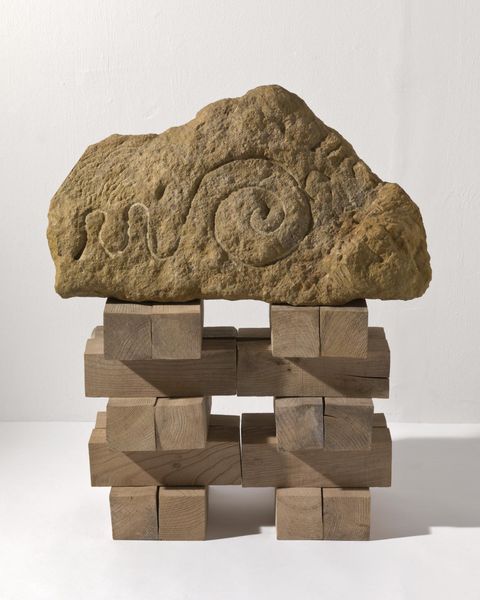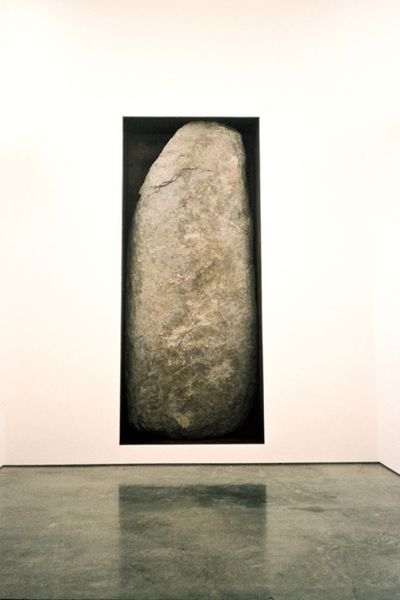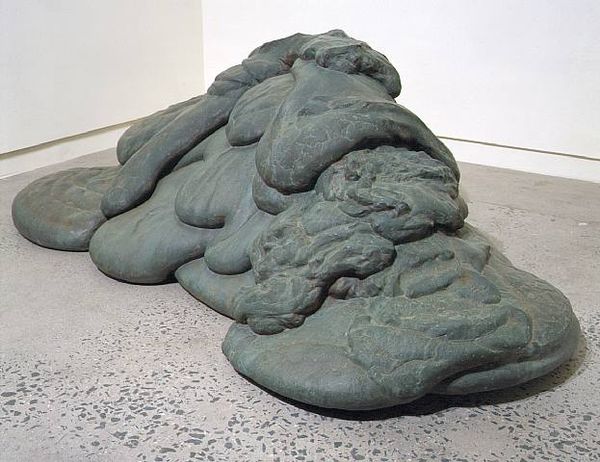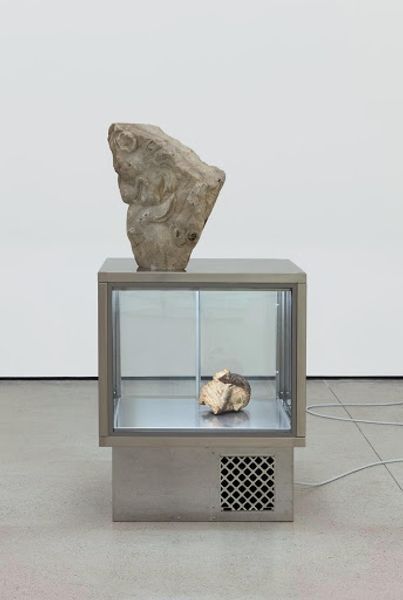
Dimensions: object: 558 x 320 x 365 mm
Copyright: © The estate of Barry Flanagan, courtesy Plubronze Ltd | CC-BY-NC-ND 4.0 DEED, Photo: Tate
Curator: Barry Flanagan’s "Cornish BuB," residing in the Tate Collections, presents an intriguing study in material and form. Editor: It’s quite striking, isn’t it? The rough-hewn stone contrasts so elegantly with the smooth, almost playful lines carved into its surface. Curator: The artist's choice to work directly with the stone, engaging in a physical dialogue with its inherent qualities, speaks to a broader conversation about labor and the artist's hand. Editor: Absolutely. The texture of the stone itself, that granular quality, and those etched lines – they play against each other beautifully. The contrast gives it a tactile and visual depth. Curator: The title, "Cornish BuB," also points to the work's origin and the geological and social context of Cornwall. Consider the labor involved in quarrying and shaping such a dense material. Editor: True, but the abstract forms Flanagan chose also evoke something primal, almost totemic. Its shape, color, and texture give a feeling of stability and permanence. Curator: Indeed, and by disrupting the traditional hierarchy between high art and craft, Flanagan challenges us to reconsider our understanding of artistic production and value. Editor: Looking at it this way reveals how Flanagan makes a statement through materiality and form. Curator: Precisely. He compels us to reflect on the art object's journey from raw material to finished sculpture.
Comments
Join the conversation
Join millions of artists and users on Artera today and experience the ultimate creative platform.
tate 7 months ago
⋮
Cornish BuB 1979 is a found granite foundation stone. Into its surface Flanagan chiseled a schematic line drawing of a female form that he then filled in with a light grey oil paint. The tip of the sculpture bears the chiseled date of the work. Cornish BuB was included, alongside Bollard 1979 (Waddington Custot Galleries, London), in Flanagan’s exhibition of stone sculptures at Waddington Galleries, London in 1980. Whereas Cornish BuB had been chiseled and painted with a schematic image of a woman, Bollard, a similarly shaped and found stone, presents a more abstract spiraling line, though similarly chiseled and painted. The union of drawn line with carving is a significant example of Flanagan’s wish to join two-dimensional and three-dimensional means of expression. Other works from the same exhibition which used a similar technique were Tantric Figures 1973 (Estate of the artist), Figures 1976 (Stedejik Van Abbemuseum, Eindhoven) and Hello Cello 1976 (National Galleries of Scotland). By illuminating the crossover between work in two and three dimensions, Cornish BuB also serves to emphasise the central place that drawing occupies within Flanagan’s sculptural practice.

